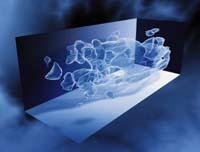Map of the dark cosmos

They have elaborated a three-dimensional map of dark matter within the COSMOS study of the Hubble Telescope. With this map, astronomers expect to know better the details of dark matter.
On this map and that of the visible zone, the relationship between dark and visible matter is observed. And they have seen that, as expected, visible matter accumulates on the structures produced by dark matter. But not always, and that has surprised many experts.
However, it is not worrying that the two maps do not always coincide. Some astronomers believe it is the result of a measurement error. The representation of dark matter requires very fine work and, in general, greater noise at the edges of the map, facilitating systematic errors. And it is precisely on the margins where there has been a divergence of maps.





